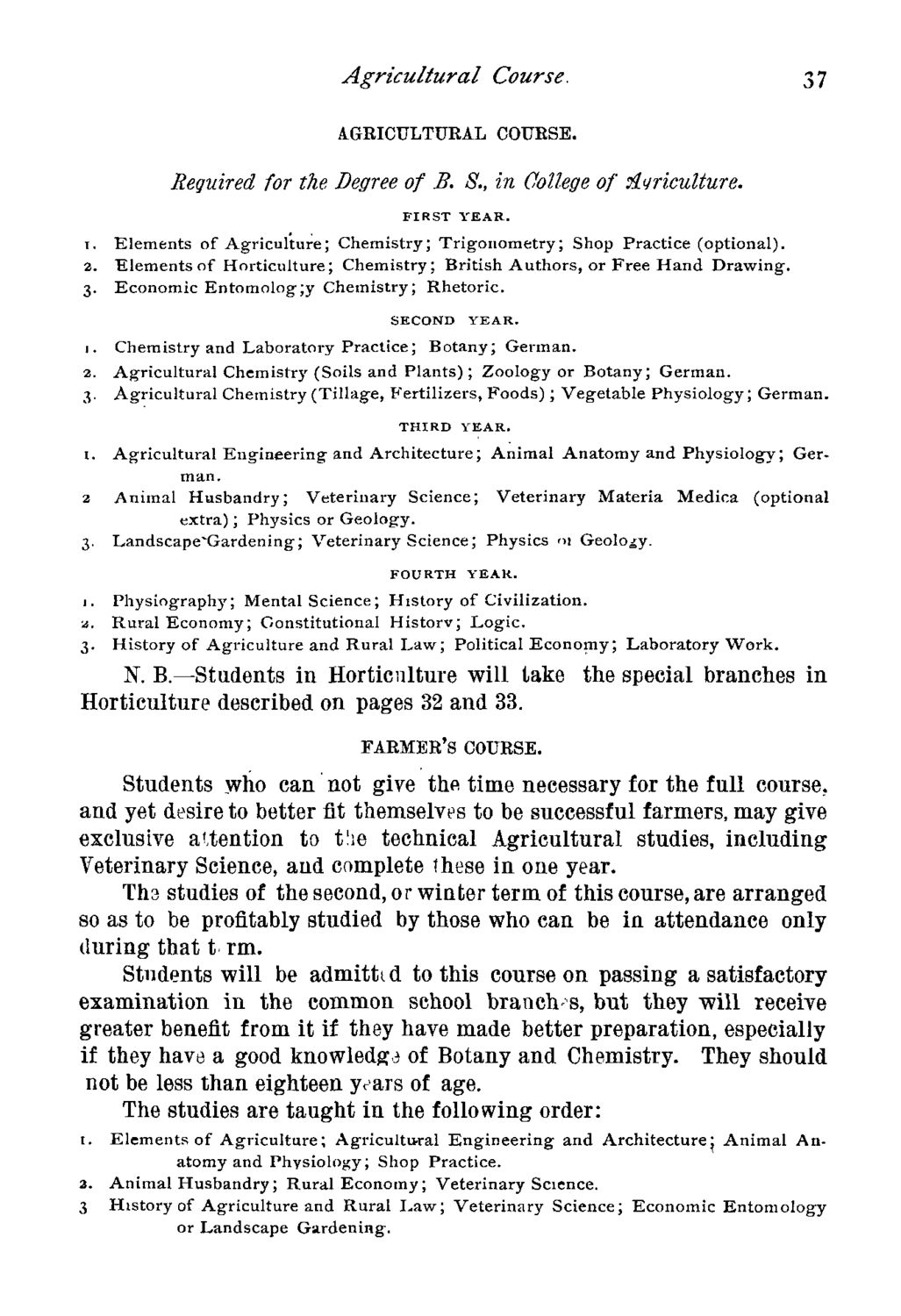Caption: Course Catalog - 1883-1884
This is a reduced-resolution page image for fast online browsing.

EXTRACTED TEXT FROM PAGE:
Agricultural Course. 37 AGRICULTURAL COURSE. Required for the Degree of B. 8., in College of FIRST YEAR. tiyriculture. T. Elements of Agriculture; Chemistry; Trigonometry; Shop Practice (optional). 2. Elements of Horticulture; Chemistry; British Authors, or Free Hand Drawing. 3. Economic Entomolog-;y Chemistry; Rhetoric. SECOND YEAR. 1. Chemistry and Laboratory Practice; Botany; German. 2. Agricultural Chemistry (Soils and Plants); Zoology or Botany; German. 3. Agricultural Chemistry (Tillage, Fertilizers, Foods); Vegetable Physiology; German. THIRD YEAR. i. Agricultural Engineering and Architecture; Animal Anatomy and Physiologv; German. 2 Animal Husbandry; Veterinary Science; Veterinary Materia Medina (optional extra); Physics or Geology. 3. Landscape'Gardening; Veterinary Science; Physics <t\ Geology. FOURTH YEAR. 1. Physiography; Mental Science; History of Civilization. &. Rural Economy; Gonstitutional Historv; Logic, 3. History of Agriculture and Rural Law; Political Economy; Laboratory Work. N". B.—Students in Horticulture will take the special branches in Horticulture described on pages 32 and 33. FARMER'S COURSE. Students who can not give the time necessary for the full course, and yet desire to better fit themselves to be successful farmers, may give exclusive attention to t!ie technical Agricultural studies, including Veterinary Science, and complete these in one year. Th3 studies of the second, or winter term of this course, are arranged so as to be profitably studied by those who can be in attendance only during that t rm. Students will be admitted to this course on passing a satisfactory examination in the common school branches, but they will receive greater benefit from it if they have made better preparation, especially if they have a good knowledge of Botany and Chemistry. They should not be less than eighteen y^ars of age. The studies are taught in the following order: 1. Elements of Agriculture; Agricultural Engineering and Architecturej Animal Anatomy and Physiology; Shop Practice. 2. Animal Husbandry; Rural Economy; Veterinary Science. 3 History of Agriculture and Rural Law; Veterinary Science; Economic Entomology or Landscape Gardening.
|